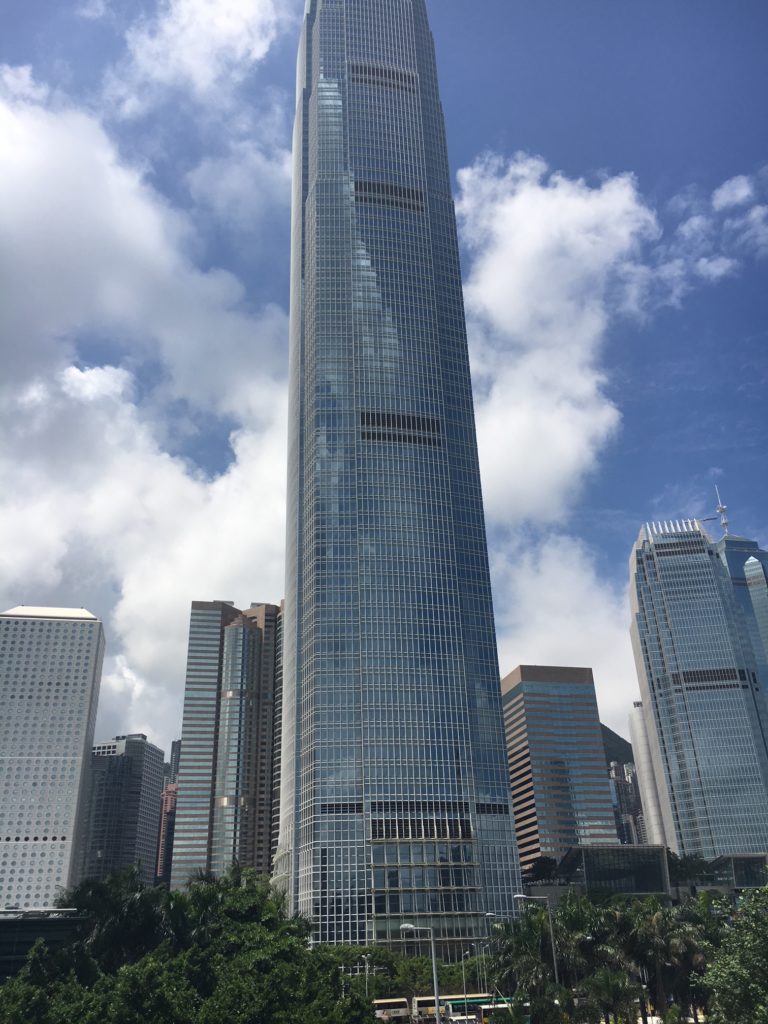
With the creation of the Asian Infrastructure Bank, and its One Belt/One Road intiative, China is changing the globe’s financial infrastructure. There is no question but that China’s economic rise is leading to new models for development. In some sense, what we are seeing is the start of a new period of Chinese-led globalization. The Chinese investment in small or developing economies -such as Greece and Venezuela- has had a significant impact on those nations, although it has not always provided great benefits to China. In Africa, Chinese foreign investment in land and infrastructure is creating new patterns of foreign investment and development. China’s influence in Central Asia has increased dramatically over the last fifteen years, especially as it has sought to obtain new sources of oil. Australia’s unusually long economic boom has relied heavily on China’s demand for commodities. China’s demand for goods, and its investments in other nations, has helped to fuel growth from Bishkek to Perth.
To understand the economic forces driving this financial shift, I recommend an infographic by Jeff Desjardins at the Visual Capitalist: “China vs. United States: A Tale of Two Economies.” China is physically larger than the United States, and has surpassed the U.S. in key areas such as Gross National Income, if measured by Purchasing Power Parity. What I think is particularly telling is to compare are the bars illustrating the total financial reserves of the two nations.
The Chinese yuan has long been tied to the U.S. dollar, through what is known as a currency peg. This tie is advantageous to the United States. While the United States has dominated the global financial architecture since World Two, in large part because of the Bretton Woods system, there is no guarantee that the U.S. dollar will remain the world’s main reserve currency. Will the U.S. dollar follow the same path into history as the Dutch guilder and the British pound? Looking at the financial reserves of the two nations -or learning more about the enormous size of Chinese gold holdings- one cannot help but wonder when the yuan might overtake the dollar.
In the summer of 2017, I had the opportunity to visit Shenzhen, as well as Macau and Hong Kong. In the West, we still associate modernity with the United States and Europe. It was disconcerting to see the pace of economic development in China and the experience of a largely cashless society. Credit cards seemed positively antiquated as everyone used their phone, to an extent that Apple Pay and other digital wallets have not managed in the United States. Want to rent a bike? You can do that with your phone. Visit a restaurant in the Hong Kong subway? Your subway pass will serve for that too. In Shenzhen I toured the markets for drones and other electronic goods. The infrastructure was modern, clean and efficient. In contrast, a visit to American airports and train stations on the East Coast is usually a dreary experience. It seems unlikely that any trade war or steel tariff could change the trajectory of China’s growth. Desjardin’s infographic is a useful tool to illustrate the scale of this global financial change.

In my personal opinion, there is currently a mood of xenophobia in the United States that unites the political right with the left in strange and unexpected ways. Whether people point to Russia’s political influence through online bots, or the cultural influence of China, nationalists, academics and politicians seem to seek out foreign nations to blame for the economic and political ills that plague our nation. The reality, however, is that sweeping financial trends are remaking the global order. We may learn that accusations regarding Russia’s role in the 2018 U.S. election are true, as the investigation by special counsel Mueller continues. Still, our major national failings are not imposed upon us from the outside. In this era of rapid change, academics and others should promote cross-cultural exchange, dialogue and venues for the open exchange of ideas. The world in 2050 will differ dramatically from that which existed when the Allied powers created the Bretton Woods system. The best that we can do is to realistically appraise these changes, create pragmatic policies to adapt to them, and embrace a cosmopolitan attitude, which rejects xenophobia and nationalism.
If you are looking for a good book on the U.S. relationship with China and India, the following work is helpful. Although the book is now a little dated, it also provides useful context on contemporary history, particularly in chapter 5, “Confrontation with China”:
Sieff, M. (2010). SHIFTING SUPERPOWERS: THE NEW AND EMERGING RELATIONSHIPS BETWEEN THE UNITED STATES, CHINA AND INDIA.
I also recommend the following article by Max Fischer and Audrey Calrsen, “How China is challenging American dominance in Asia,” March 9, 2018, New York Times.
